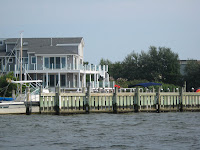Wow, so much has happened this year, I don't even know where to start!
First of all, the Drexel terrapin crew went to Chauvin, LA in November to present our research findings at the diamondback terrapin working group symposium on the ecology, status, and conservation of the diamondback terrapin. We learned a great deal about other kinds of studies being conducted on the terrapin; most of all though, we learned how much we still don't know about the terrapin, and more research is necessary to gain a greater understanding.
Over the Summer of 2010 I collected over 500 reflectance spectra from more than 60 individual terrapins. From these data I have been able to compare coloration within and among individuals, as well as model the visual system of the terrapin. From these analyses and from previous research on turtle vision, I speculate that terrapins have tetrachormatic vision (UV, blue, green, red), and communicate across all color channels, especially in the UV. Intra- and inter-specific signaling in the UV has been documented in flower-pollinator relationships as well as a signal communicating fitness to potential mates (e.g. birds, jumping spiders, ocellated lizards).
In addition to the vision modeling, I have processed most of my blood and tissue samples. I hope to finish these up and send them out for genotyping so I can correlate possible differences in reproductive success with differences in phenotype (coloration). If UV patterning or coloration is a signal of fitness in the terrapin, then I may find that terrapins with a brighter UV signal may have higher reproductive success.
On top of all this, last March I completed my written candidacy exam, and on April 12 completed my oral exam to become a PhD candidate! Now that I am a candidate, the work has really started!
This Summer I hope to gather more reflectance spectra data, blood samples and hatchling tissue samples for genotyping, as well as design a system for measuring in situ underwater irradiance. But the only way this can be done is if you sign up to become an Earthwatch volunteer! Not only will you help me collect data to elucidate the visual ecology of the terrapin, you will get to join one of the research staff everyday to collect, track, and release terrapins. Some weeks we collect almost 100 terrapins! That's a lot of processing...so come sign up and help us out!





